Abstract
The resistance to heat, as measured by D values and phantom thermal death time curves, was observed to increase for one of three strains of Clostridium perfringens type A subsequent to animal passage. Animal passage was accomplished by the force-feeding of germ-free mice with bacterial suspensions of the organism, followed by the force-feeding of additional gnotobiotic mice with the contaminated feces. For the one strain in which an increase in heat resistance was noted, the result could not be attributed to mouse feces per se, since the presence of sterile germ-free mouse feces in a suspending medium did not protect C. perfringens spores from elevated temperature destruction.
Full text
PDF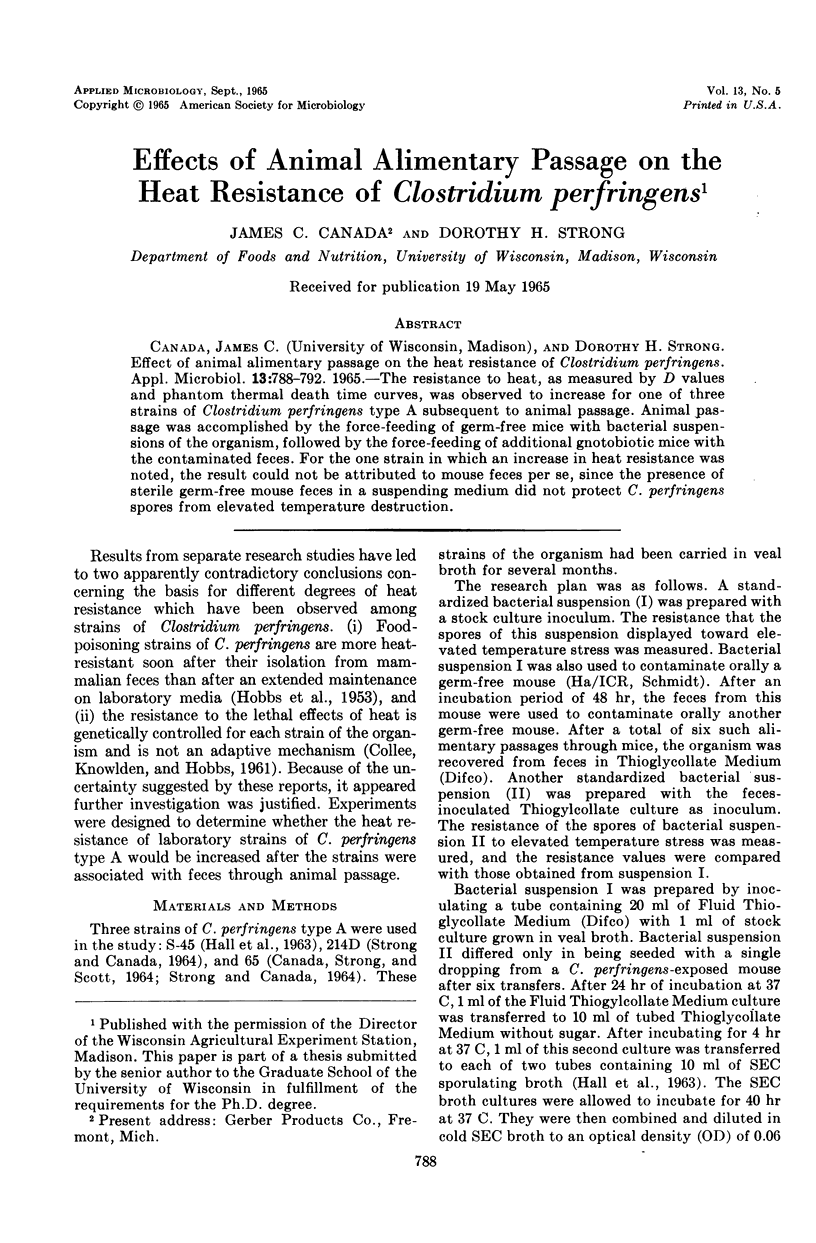
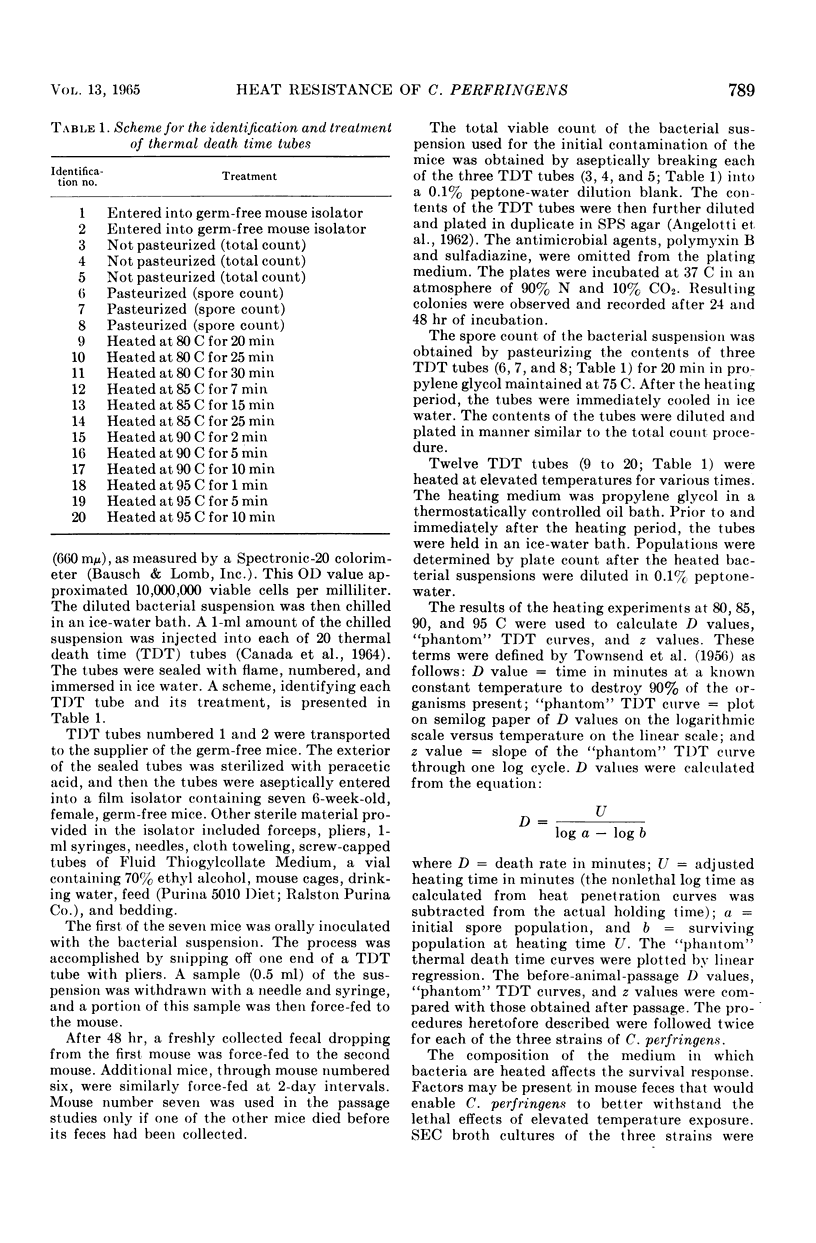
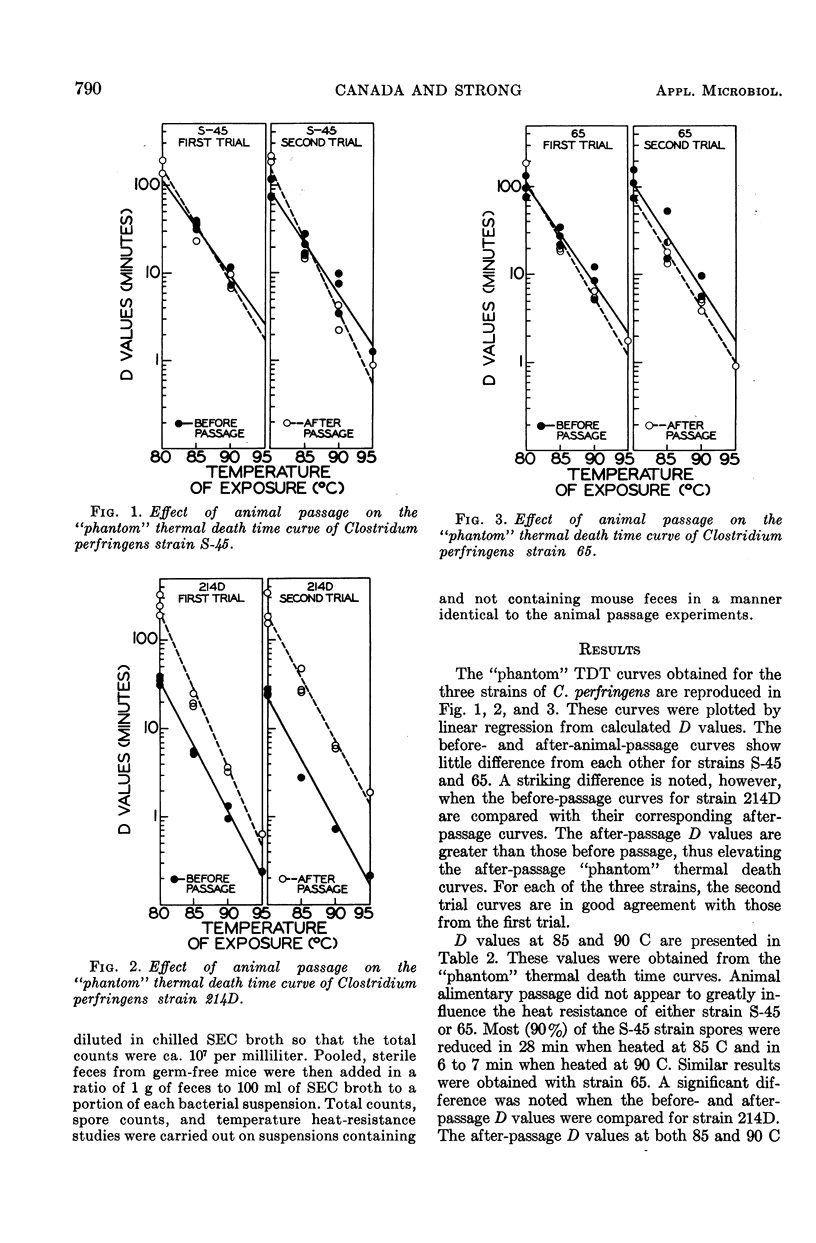
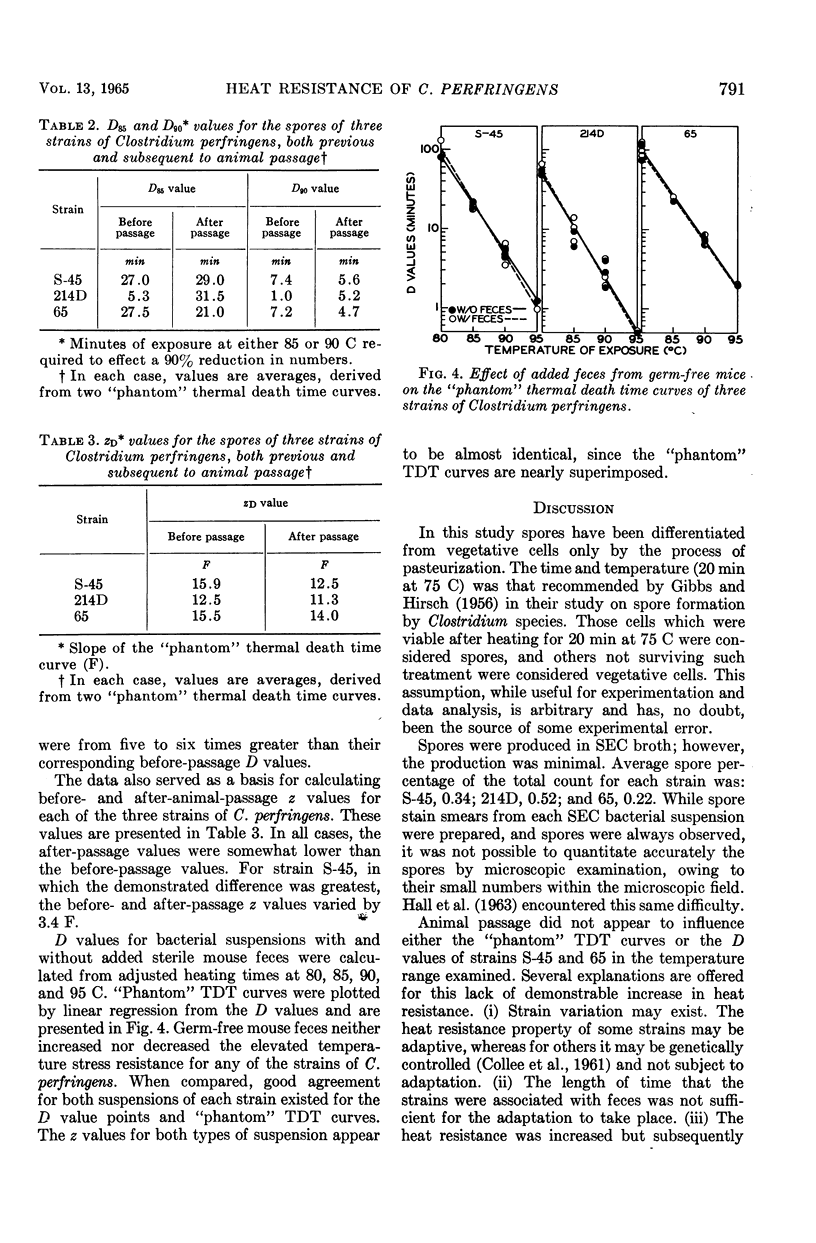
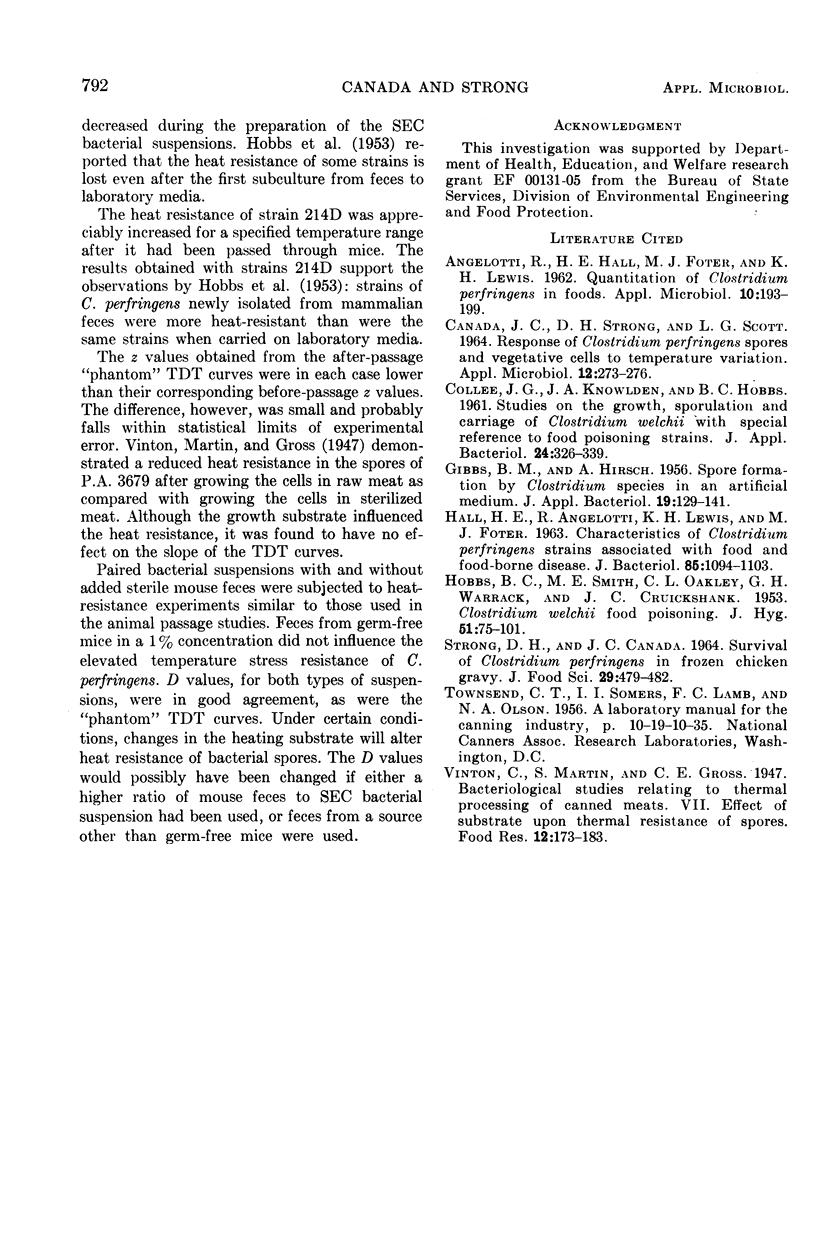
Selected References
These references are in PubMed. This may not be the complete list of references from this article.
- ANGELOTTI R., HALL H. E., FOTER M. J., LEWIS K. H. Quantitation of Clostridium perfringens in foods. Appl Microbiol. 1962 May;10:193–199. doi: 10.1128/am.10.3.193-199.1962. [DOI] [PMC free article] [PubMed] [Google Scholar]
- CANADA J. C., STRONG D. H., SCOTT L. G. RESPONSE OF CLOSTRIDIUM PERFRINGENS SPORES AND VEGETATIVE CELLS TO TEMPERATURE VARIATION. Appl Microbiol. 1964 May;12:273–276. doi: 10.1128/am.12.3.273-276.1964. [DOI] [PMC free article] [PubMed] [Google Scholar]
- HALL H. E., ANGELOTTI R., LEWIS K. H., FOTER M. J. CHARACTERISTICS OF CLOSTRIDIUM PERFRINGENS STRAINS ASSOCIATED WITH FOOD AND FOOD-BORNE DISEASE. J Bacteriol. 1963 May;85:1094–1103. doi: 10.1128/jb.85.5.1094-1103.1963. [DOI] [PMC free article] [PubMed] [Google Scholar]
- HOBBS B. C., SMITH M. E., OAKLEY C. L., WARRACK G. H., CRUICKSHANK J. C. Clostridium welchii food poisoning. J Hyg (Lond) 1953 Mar;51(1):75–101. doi: 10.1017/s0022172400015515. [DOI] [PMC free article] [PubMed] [Google Scholar]


